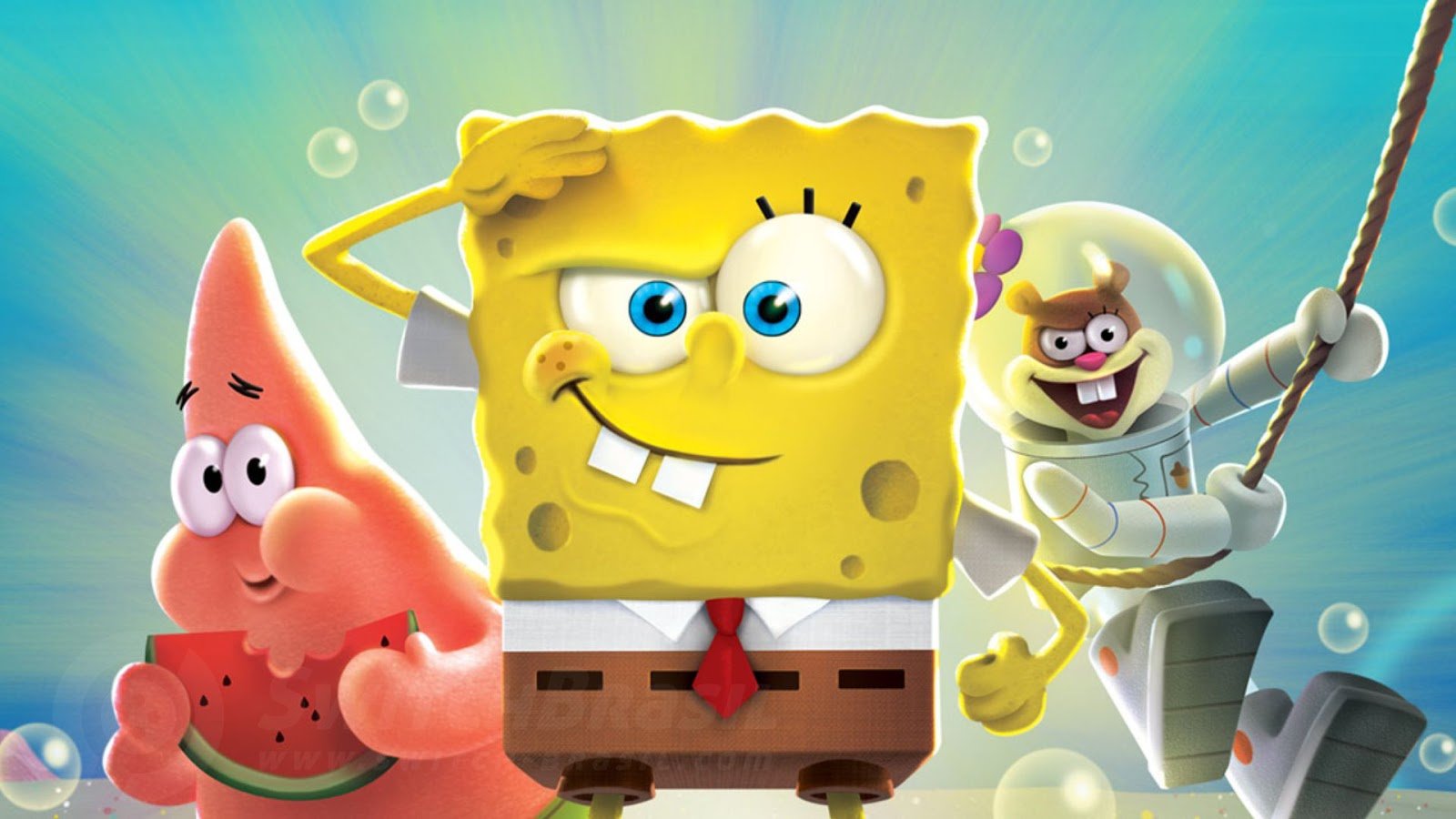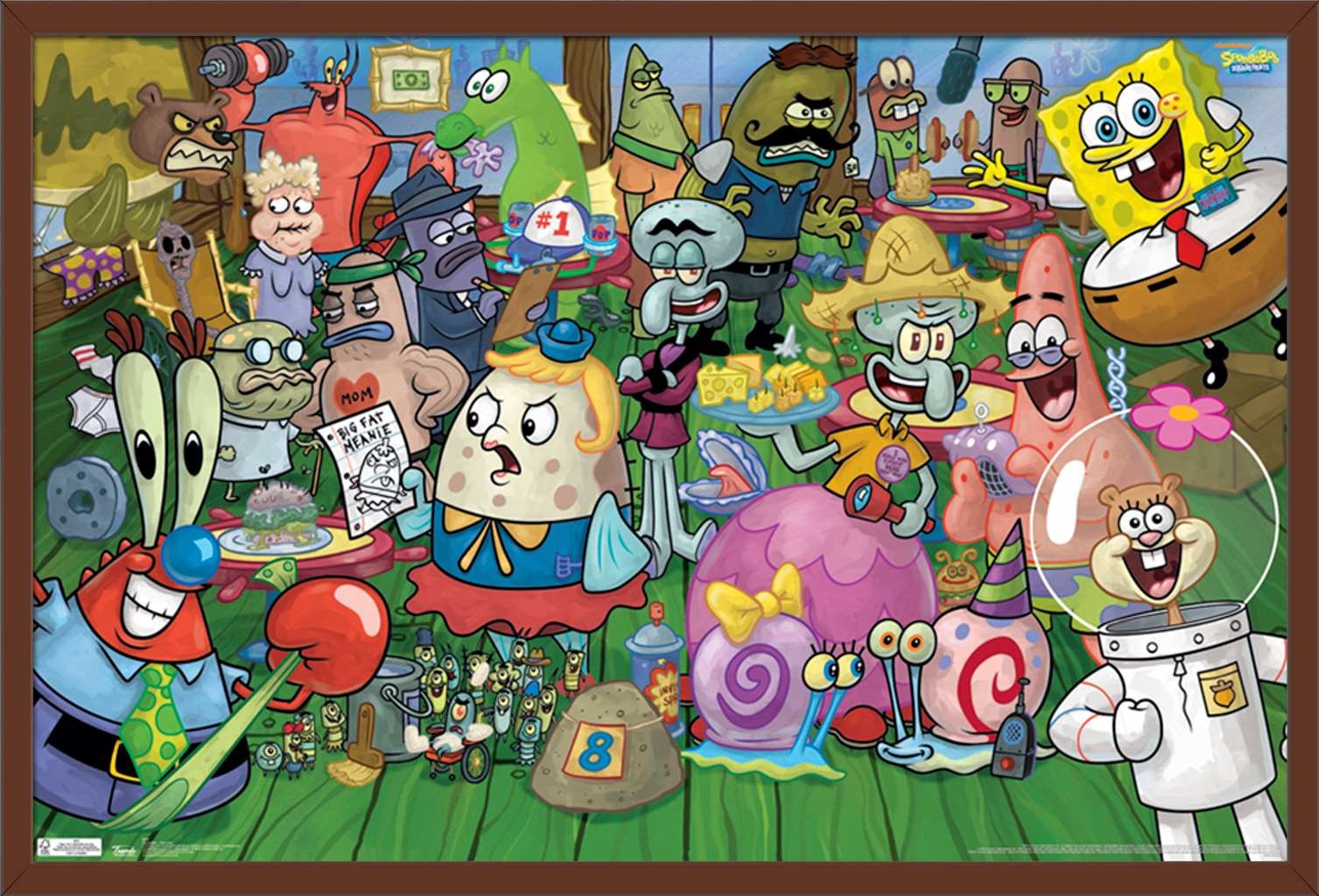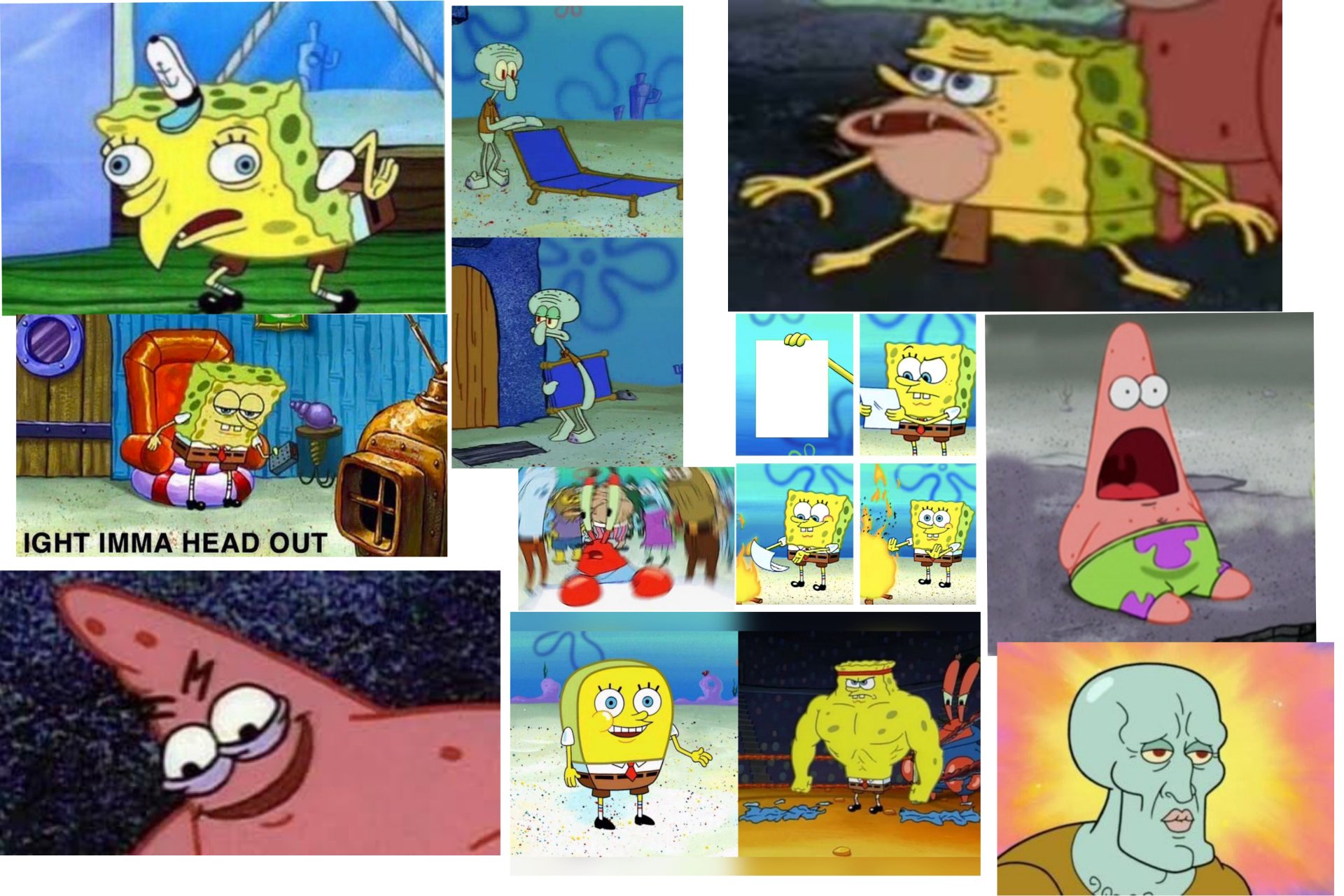
SpongeBob SquarePants: The Most Important Show to Generation Z and their Popular Culture
Article by: Rhett Brady I Staff Writer, BCS Chronicle
What You Need To Know:
SpongeBob premiered on Nickelodeon in 1999, and it is still running on the network.
SpongeBob is one of the most culturally relevant products of the 21st century.
Generation Z’s humor has been shaped by the zany and surreal content of the show.
The cultural and economic presence of the show will impact the animation industry forever.
Ever since animation studio Hanna-Barbera pioneered the television animation industry, every child since the 1960s has grown up with touchstone cartoons that defined their generational culture. Hanna-Barbera cartoons such as The Flintstones and Scooby-Doo defined the 60s and 70s, with Warner Bros. still creating new series based on those respective shows to this day. Many cartoons of the 1980s were created specifically to sell children's toys. Examples such as Transformers prove that formula still works. The 1990s were defined by the darker themes and edgier content of their cartoons, with Batman: The Animated Series and Gargoyles fitting that description. However, the one cartoon important to my generation, and an entire generation of post-irony internet culture is SpongeBob SquarePants. Going strong since 1999, there are 13 seasons with 271 released episodes, three theatrically released films, video games, toys, clothes, tie-in products, and so many other things with SpongeBob’s face on it. With the franchise garnering over “$13 billion in lifetime retail sales of consumer products'' (Business Wire, 2018), winning multiple Emmy awards, and is referenced frequently to this day by the people who grew up watching, the series has entered its way into the mainstream cultural zeitgeist. This work aims to analyze how SpongeBob was able to do so and talk about how important the cartoon is to Generation Z’s humor and culture. It also aims to explain how memes have been able to keep the show alive.
One of Hanna-Barbera’s most popular franchises, Scooby-Doo has laid the groundwork for the reinvention of cartoons throughout different eras of television.
Stephen Hillenburg 1961-2018
The creation of SpongeBob SquarePants can be traced back to Stephen Hillenburg. Before working at Nickelodeon as an animator, he earned a degree from Humboldt State University studying marine sciences. He minored in art. Beginning his career at Nickelodeon as a creative director and animator for Rocko’s Modern Life, SpongeBob became a series after his work on Rocko finished up. Using his knowledge of marine biology, he was able to create a world and characters that mirrored what he learned in university. Every character is based on real sea creatures. Bikini Bottom is based on Hillenburg’s home of Los Angeles, California. Before Rocko, Hillenburg had the idea of SpongeBob but didn’t start putting everything together until he was encouraged by writer Martin Olsen.
“I don't know if this is true for everybody else, but it always seems like, for me, I'll start thinking about something and it takes about ten years to actually have it happen, or have someone else believe in it... It took me a few years to get [SpongeBob SquarePants] together” (Neuwrith, 2003).
Hillenburg’s dedication to his craft can be seen in all of the designs. Throughout every minor change throughout the show, films, or other pieces of media, the core look of the characters and world has stayed the same. While the animation has always been colorful and vibrant, with a special appreciation for the cel animation during the first season, it’s the writing that also helped make this show memorable among the target audience.
SpongeBob’s most famous characters from the first three seasons.
While there have been 13 seasons of SpongeBob produced, the first three seasons of the show are considered to be the peak of the series’ writing. While not having worked on the original series run, writer Luke Brookshier gave some in-depth insight into the creative mindset of the writers, “SpongeBob is structured differently than most cartoons. We have two types of writing positions. A team of 5 outline and premise writers creates the initial storylines. From there each outline goes to a storyboard director team who flesh out the story, draw a thumbnail storyboard and write dialogue. Unlike most television animation, the thumbnail storyboard functions as the script” (4mations, 2009). I can believe that the visuals help create the jokes since a lot of the comedy is visual as well. Every situation and visual comedic moment exhibits surrealist and black comedy that keeps the adults entertained while the children can enjoy the immaturity of the characters. For example, in the season three episode Nasty Patty, SpongeBob and his boss, Mr. Krabs, have to serve the health inspector. Hijinks ensue, and they believe that they accidentally murdered him with the horrible hamburger. The kids will enjoy the slapstick of the health inspector being knocked out in various ways. The adults will laugh at the surrealist comedy of SpongeBob and Mr. Krabs having to hide a body from the cops throughout the entire episode. This is just one example, but this is common even after the third season wrapped up production. It’s one of the best reasons to still watch the show as an adult, and it’s no wonder why SpongeBob became a media juggernaut.
To show how popular the SpongeBob name is within other forms of media, video games will be used as an example. Video game company THQ Nordic partnered with Nickelodeon to bring back the Spongebob license, and the senior vice president of Nickelodeon toys Jon Roman said, “The appetite for Nickelodeon content old and new continues to grow and it’s exciting to bring our beloved content to new audiences through this partnership with THQ Nordic. These titles were popular when they were first released and we can’t wait for fans around the world to rediscover their favorites” (THQ Nordic, 2018).
SpongeBob messing with Squidward as he usually does, even in a video game.
SpongeBob: Battle for Bikini Bottom Rehydrated is a remake of the 2003 title SpongeBob: Battle for Bikini Bottom. It was released in 2020 amid the Covid-19 pandemic lockdowns, and along with people clamoring for something to play, it was enticing because it was unlike any other game coming out. It has a happy tone and fun gameplay. It is pure escapism. According to a yearly earnings report from THQ Nordic, the game sold over 2 million copies (2021). Without the SpongeBob branding, the video game probably would have fallen into obscurity. However, with the power of media icons like SpongeBob, the game was a much larger financial success than anticipated. This illustrates how powerful the SpongeBob brand is, and one of the ways how powerful it has become a cornerstone of early 21st century popular culture.
Financial success is important for a brand, but the way that SpongeBob has penetrated the culture of young people is through continuous references in memes and on the internet. Generation Z is referred to as people born between 1997 and 2012 (Virginia Family Law). With SpongeBob premiering in 1999, it has grown up with the generation. As an experiment, I posted a question on a forum asking for people’s memories of the show, and I got a lot more responses than I would have thought.
Out to date with the chocolate lady.
Valerie said, “Quotes from the episode where SpongeBob and Patrick are selling chocolate are constantly flying around in conversations with my family. We most especially love "sweet, sweet chocolate - I've always hated it!" and "start rubbin' that chocolate" in response to the claim that rubbing chocolate on your skin will make you live forever. Naturally, this comes up quite a bit whenever someone in my family complains of aches or pains.” I knew what she was referring to the moment I saw that post. A commonality of growing up with the same things.
Mathew said, “I mean, it's pretty mainstream, to say the least. It's been picked up by clothing brands such as Vans with their Off the Wall collection.” Mathew pointed out an interesting crossover with things that are popular with young people. SpongeBob has appeal in something as random and unrelated as skating shoes.
One of the pairs produced by Vans that features the SpongeBob license.
Tamara said, “The theater company in my town is doing a SpongeBob play, and my friend is Mr. Krabs. He said the first night someone in the audience started quoting part of the play as they did one of the skits that were in the show.” Imagine being able to collectively quote something from pure memory of watching it so many times at a young age.
Going on the internet and looking up “SpongeBob memes” might cause someone to be overwhelmed by the sheer amount of content. I could post a gallery here, and I just might give some examples. There are SpongeBob templates made specifically to make memes with the character. The SpongeBob meme subreddit has over 4.2 million members. SpongeBob has been referenced in memes that are about other products. Most of the memes on the front page of the subreddit are about the video game Elden Ring and many videos from TikTok with sounds from the show. The content of SpongeBob memes is almost endless. I would also imagine that people still haven’t seen the show, so these memes are creating new fans through means not seen before the invention of social media.
The most famous templates for SpongeBob memes.
Alex Luna, a writer at Study Breaks, summed it up perfectly, “All this and more is why the show resonates with its target audience of children, but also its adult audience of former viewers. Even now as adults, many people still find themselves rewatching and catching subtle jokes that flew over their heads as kids. This and more has led to the outpouring of effort put into SpongeBob memes as we celebrate an important show of our childhood. A display of this dedication can be found in the popular subreddit r/BikiniBottomTwitter, a Reddit forum dedicated to all things SpongeBob” (Study Breaks, 2020).
I think that throughout every era of SpongeBob, regardless of quality, there have been memorable episodes and moments that have stuck with people. Even when former head writer Paul Tibbitt took over the show after Hillenburg left after the release of the first theatrical film.
Paul Tibbitt directed the second SpongeBob theatrical film. The SpongeBob Movie: Sponge Out of Water was positively reviewed by critics and audiences for the surrealist humor and wonderfully done animation. The meme was made by me from a still of the film.
Benjamin Fuller wrote, “Reflecting the harsh content released by Tibbitt-era SpongeBob, news outlets began purveying what Hugo Lindgren terms “pessimism porn,” a form of infotainment that showcases economic disaster and encourages apocalyptic fantasy, imparting the thrill of survival to its consumers” (Fuller, 2019).
Examining the different eras of the show has birthed different types of memes. The original Hillenburg era has memes that are generally upbeat in nature, along with having the most dedicated fans. The Tibbitt era has a lot of memes as well, mostly since it was going on when the fanbase was still young enough to watch it daily. They are more pessimistic in nature, going with Fuller’s general analysis of that era of the show. The era of Hillenburg’s return and the new episodes have some memes here and there, but the audience of that era of the show is targeted isn’t old enough to enjoy and understand the surreal humor of the show. I think my personal favorite is courtesy of SpongeBob’s best friend Patrick, where he says “things are gonna get crazy” and a realistic human face is superimposed where his cartoon face is supposed to be. I hope that the included clips and memes help to illustrate the different styles of animation and the difference in sense of humor between the showrunners.
It’s hard to believe that this show has existed since before I was born and is still running and entertaining children. While I haven’t watched SpongeBob every Saturday morning in several years, I respect the show for how much it has entertained me over the years. Throughout all of the growing pains, bad episodes, and changes in the production crew, SpongeBob SquarePants has always maintained a level of visual and storytelling quality that is still above many of its contemporaries.
SpongeBob’s humorous storytelling has been translated into a successful comic book series.
The legacy of the character and “the show created a unique language that could connect people of all ages who watched. Certain phrases from “SpongeBob” are nearly universally recognizable among people in a certain age range. “Is mayonnaise an instrument?” and “I’m ugly and I’m proud” are two among hundreds of others. The combination of fry cook and underwater references made a weird kind of vernacular. Sometimes sayings from the show are so common or worked so well that kids don’t recognize them as SpongeBob originals. Once a few years ago, I was babysitting a six-year-old boy when he dropped his plate of chicken nuggets. Although he was very specifically not allowed to watch SpongeBob — his mom reminded me of this before she left — he yelled “Oh tartar sauce!” as he dropped it. I expected him to try to excuse this somehow, but he didn’t even realize he’d outed himself as a secret “SpongeBob”-watcher (The Wellesley News, 2018).
There will likely never be another show like SpongeBob SquarePants. Its cultural impact among everyone who has watched it is undeniable in the language of younger generations as well as future generations who will be shown the show by their parents. It’s as important as the shows talked about at the beginning of this piece, if not more important. The meme culture will keep this show’s legacy alive along with the media empire it has created. Future generations will discover the show through streaming and the internet, and the work of the artists will forever be preserved.
Works Cited:
Fuller, Benjamin. “The SpongeBob Franchise : Pop Culture Fixture, Reboot Culture Artifact.” Studies in Popular Culture, vol. 42, no. 1, Oct. 2019, pp. 77–102. EBSCOhost, https://search.ebscohost.com/login.aspx?direct=true&db=edsjsr&AN=edsjsr.26926333&authtype=shib&site=eds-live&scope=site.
Madevi. “Interview with Luke Brookshier, SpongeBob SquarePants Storyboard Director.” 4mations, 23 Sept. 2009, https://web.archive.org/web/20120323112314/http://www.4mations.tv/2009/09/interview-with-luke-brookshier-spongebob-squarepants-storyboard-director/.
“Full Year Report 2020/2021 and Q4 Webcast Presentation.” Embracer, 20 May 2021, https://embracer.com/webcast/q4-report-webcast-presentation/.
Jones, Christiana. “FAQ: When Does Generation Z Start?” Family Law, 1 Nov. 2021, https://www.virginialeenlaw.com/faq/faq-when-does-generation-z-start.html.
Meisenzahl, Mary. “Reflecting on SpongeBob’s Legacy.” The Wellesley News, 5 Dec. 2018, https://thewellesleynews.com/2018/12/05/reflecting-on-spongebobs-legacy/. Accessed 15 Apr. 2022.
Neuwirth, Allan. “Chapter 2: Something Silly Is Afin: Putting SpongeBob SquarePants Together.” Makin' Toons: Inside the Most Popular Animated TV Shows and Movies, Allworth Press, New York, 2003, pp. 48–58.
“THQ Nordic and Nickelodeon Bring Back Selected Game Titles from the Past .” Thqnordic.com, 21 Mar. 2018, https://thqnordic.com/article/thq-nordic-and-nickelodeon-bring-back-selected-game-titles-past. Accessed 15 Apr. 2022.









